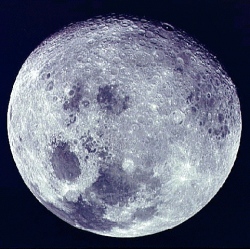
In 2009, NASA’s Lunar Crater Observation and Sensing satellite slammed into a permanently shadowed lunar crater and ejected a plume of material that was surprisingly rich in water ice. Water and related compounds have also been detected in the lunar regolith, the layer of fine powder and rock fragments that coats the lunar surface.
But the origin of this water has remained unclear. Theoretical models of lunar water stability dating to the late 1970s suggest that hydrogen ions from the solar wind can combine with oxygen on the Moon’s surface to form water and related compounds called hydroxyls, which consist of one atom of hydrogen and one of oxygen and are known as OH.
A new study, published in the journal Nature Geoscience, confirms solar wind as a source for water embedded in the lunar surface.
The team used infrared spectroscopy and mass spectrometry analyses of Apollo samples to reveal the presence of significant amounts of hydroxyl inside glasses formed in the lunar regolith by micrometeorite impacts. When combined, the techniques of Fourier transform infrared spectroscopy and secondary ion mass spectrometry can be used to determine the chemical form of the hydrogen in a substance, as well as its abundance and its isotopic composition.
“We found that the ‘water’ component, the hydroxyl, in the lunar regolith is mostly from solar wind implantation of protons, which locally combined with oxygen to form hydroxyls that moved into the interior of glasses by impact melting,” said Prof Youxue Zhang of the University of Michigan, who co-authored the study.
“Lunar regolith is everywhere on the lunar surface, and glasses make up about half of lunar regolith. So our work shows that the ‘water’ component, the hydroxyl, is widespread in lunar materials, although not in the form of ice or liquid water that can easily be used in a future manned lunar base.”
